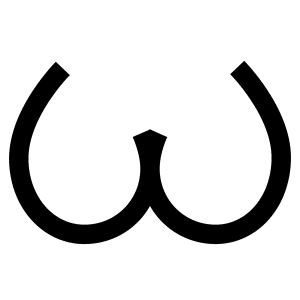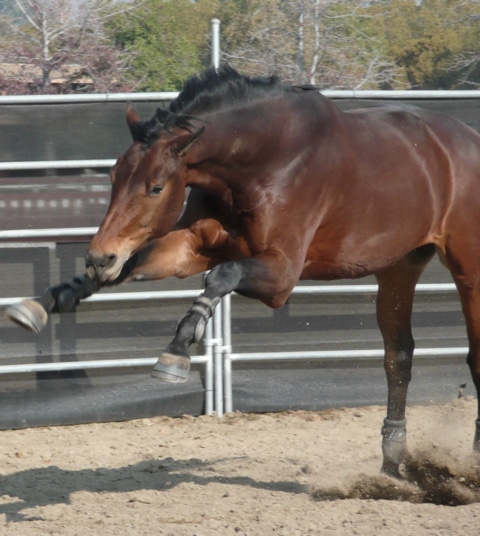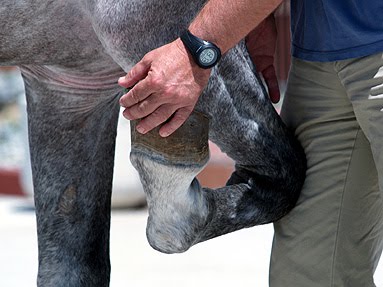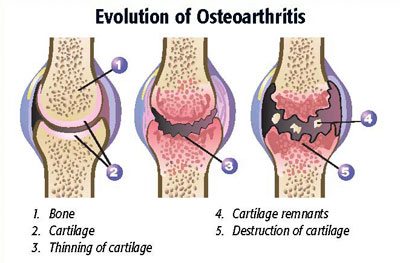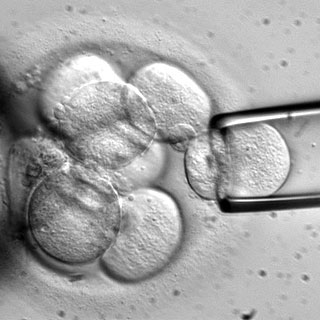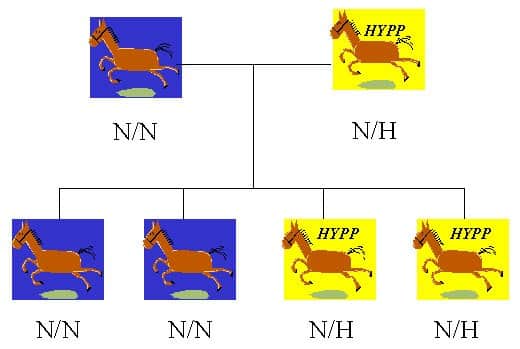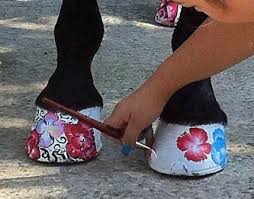 One question that seems to come up fairly often during the course of my practice is, “Which hoof dressing do you recommend?” I wish I had a good answer to that. It’s a hard question to answer anyway. A Google search of “Horse hoof dressing” shows 21 pictures of products on the first page, and a total of 10 pages of options, so it appears that it’d be kind of hard to try all of them over the mere course of a human lifetime. But if it’s a given that many horses don’t have good quality hooves – you know, brittle, shelly, cracking, thin walls, and such – and that there are almost as many hoof dressing products as there are stars and that horse owners understandably want to make sure that their horses’ hooves are in the best shape possible, I thought it might be fun to try to sort through the surprisingly sparse literature pertaining to hoof dressings and see if we could come up with a least a couple of reasonable conclusions.
One question that seems to come up fairly often during the course of my practice is, “Which hoof dressing do you recommend?” I wish I had a good answer to that. It’s a hard question to answer anyway. A Google search of “Horse hoof dressing” shows 21 pictures of products on the first page, and a total of 10 pages of options, so it appears that it’d be kind of hard to try all of them over the mere course of a human lifetime. But if it’s a given that many horses don’t have good quality hooves – you know, brittle, shelly, cracking, thin walls, and such – and that there are almost as many hoof dressing products as there are stars and that horse owners understandably want to make sure that their horses’ hooves are in the best shape possible, I thought it might be fun to try to sort through the surprisingly sparse literature pertaining to hoof dressings and see if we could come up with a least a couple of reasonable conclusions.
BEFORE WE GET STARTED: I won’t be recommending any specific product. If you have a favorite, I’d suggest you keep using it, at least use it until another product becomes your favorite product.
Let’s start with a basic question.
WHAT IS HOOF?
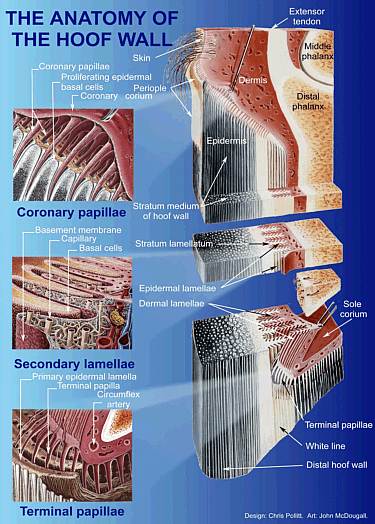 Before you can do anything to something, you have to understand what the something is, right? There have been a good number of microscopic studies of the horse’s hoof. They’re very interesting and all – here’s a fairly recent one if you’re really interested in such things.
Before you can do anything to something, you have to understand what the something is, right? There have been a good number of microscopic studies of the horse’s hoof. They’re very interesting and all – here’s a fairly recent one if you’re really interested in such things.
Hoof is basically the same sort of tissue (a protein called keratin) as are the outer layers of your skin, and particularly your fingernail or toenail. It’s quite different from human nails, however, in that the tissue of the horse’s hoof is arranged in both layers and tubes – human nails are more of a plate. The unique structure of the horse’s hoof allows the horse to support his tremendous weight, which, of course, is not part of the function of your nails. The tubular structures of the horse are thought to have the main mechanical role in allowing the horse to trot, canter, piaffe, gallop, and walk (and rack and any other gait you want to add, as well). Oh, hooves give the horse something to stand on, too.
That’s all well and good, but the biggest thing that you have to understand about hoof tissue – insofar as hoof dressings go – is that it’s dead. Now I don’t know what sort of luck you’ve ever had resurrecting dead things, but mine has been pretty dismal. Still, that’s a pretty important fact to keep in mind when it comes to evaluating the claims made for various hoof dressings. You can’t make dead come back to life. But you still may be able to do something. Emphasis on the, “May.”
WHAT’S IN A HOOF DRESSING?
A lot, depending on the dressing. But, fundamentally, not all that much. Hoof dressings generally contain one of three things, with a bunch of other stuff tossed in to appeal to… someone. That said, you can be pretty sure that any hoof dressing will contain one of three things:
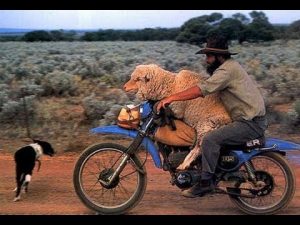 Petroleum oil derivatives – These might include neatsfoot and/ or cod liver oil, pine tar (think: “sticky”), petroleum compounds, and/or turpentine. Vaseline® is petroleum based. I once had a client that painted his top show hunter’s horses hooves with used motor oil (I’m not recommending this, however, as far as I could tell, the horses did fine).
Petroleum oil derivatives – These might include neatsfoot and/ or cod liver oil, pine tar (think: “sticky”), petroleum compounds, and/or turpentine. Vaseline® is petroleum based. I once had a client that painted his top show hunter’s horses hooves with used motor oil (I’m not recommending this, however, as far as I could tell, the horses did fine).- Lanolin-based products – Lanolin is a wax secreted by wool-bearing animals: some wags call it “sheep grease.” Lanolin products aren’t oily – they’re more like hand lotion. Lanolin-based products have things in them such as lanolin (hence, the name), lactates, stearates, alcohols, and glycerin.
- Drying agent – Hoof dressings with drying agents in them are made with ingredients such as acetone, which is a primary ingredient in nail polish remover. In my experience, most people don’t use drying agents routinely on their horses’ hooves, probably because most people don’t think that trying to dry out a horse’s hoof is a good idea (and it’s probably not).
WHAT IS A HOOF DRESSING SUPPOSED TO DO?
Well, let’s see … all you have to do is read the labels! Critically, of course.
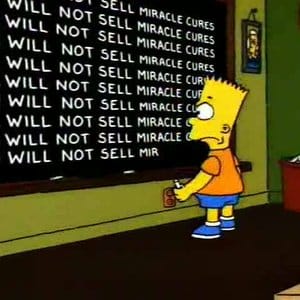 “…. retards split hooves and quarter cracks. Helps create healthy feet with regular use. Shines up hooves.”
“…. retards split hooves and quarter cracks. Helps create healthy feet with regular use. Shines up hooves.”
A QUESTION: Have you ever called your veterinarian because of concerns about the shininess of your horse’s hooves? I think it would be sort of like going to the mechanic because your car is dirty.
“…. helps prevent brittle, cracked hoof walls. This effective, long-term hoof conditioner that allows hooves to breathe.”
AN OBSERVATION: Breathing through the skin (cutaneous respiration) occurs in a surprising number of organisms, including some insects, amphibians, fish, sea snakes, mudskippers, and turtles. Hooves, as previously noted, are dead. They don’t breathe.
“Maintains optimum hoof condition and aids re-structuring & growth of the hoof. Application by hand stimulates keratin producing cells.”
YOU CAN’T USE A BRUSH? Keratin producing cells are in the horse’s coronary band, not the hoof. Just sayin’.
“With daily use, XXX promotes growth of the outer aspect of the hoof, giving new hoof growth extra time to form without being exposed to harsh elements.”
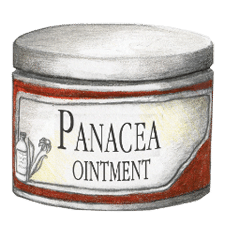 NOW WAIT A SECOND: Hoof growth occurs at a fairly steady rate from the horse’s coronary band, “elements” notwithstanding. And what about the “inner” aspect?
NOW WAIT A SECOND: Hoof growth occurs at a fairly steady rate from the horse’s coronary band, “elements” notwithstanding. And what about the “inner” aspect?
“provides intense hydration for the hooves. The butyrospermum and fatty acids in its formula have very potent nourishing qualities. This action is further boosted by helianthus annuus seed oil, which provides emolient, nourishing, and renewing properties and and provides hooves with the ingredients they need to allow them to renew fully.”
THAT DEAD THING: Renewing and renourishing probably work best when the target tissue isn’t already dead. If you didn’t know (I didn’t), butyrospermum is a vegetable oil sold as shea butter and helianthus annuus seed oil is plain old sunflower seed oil, most commonly used to fry foods. Why can’t we just say that?
“the first hoof formula to include hyaluronic acid (HA) and MSM.”
OH DEAR: Adding extra stuff to something that you put on dead tissue still doesn’t fix the underlying dead problem.
I could go on. But I think you see the point. Lots of stuff on hoof dressing labels sounds good. But the key question is, “Do they do any good?”
HOW IS A HOOF DRESSING SUPPOSED TO DO WHAT IT IS SUPPOSED TO DO?
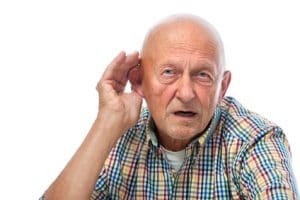 Hoof tissue is affected by the moisture content of the ground on which it walks (… trots, or canters). That’s even been demonstrated in good scientific studies. But maybe not as much as you think. It’s mostly the shape of the hoof that’s affected by the ground. In wild Australian horses, the hardness of the ground and the distance horses have to travel have an effect on the shape of the foot. Harder ground and longer travel distances are associated with short hoof walls and minimal hoof wall flaring. Softer ground and moderate travel distances are associated with long flared walls, similar to that of typical untrimmed feet of domestic horses. Hoof shape is also affected by exercise. It’s also affected by genetics.
Hoof tissue is affected by the moisture content of the ground on which it walks (… trots, or canters). That’s even been demonstrated in good scientific studies. But maybe not as much as you think. It’s mostly the shape of the hoof that’s affected by the ground. In wild Australian horses, the hardness of the ground and the distance horses have to travel have an effect on the shape of the foot. Harder ground and longer travel distances are associated with short hoof walls and minimal hoof wall flaring. Softer ground and moderate travel distances are associated with long flared walls, similar to that of typical untrimmed feet of domestic horses. Hoof shape is also affected by exercise. It’s also affected by genetics.
TAKEAWAY NUMBER ONE – Hoof dressings are not going to change the shape of your horse’s feet.
As important as the ground is, the curious thing is that the ground itself doesn’t seem to have much to do with the amount of moisture in the hoof wall. Whether horses live in wet or dry environments, their hooves seem to have about the same amount of moisture.
TAKEAWAY NUMBER TWO: You’re not going to do much to change the amount of moisture in your horse’s hooves.
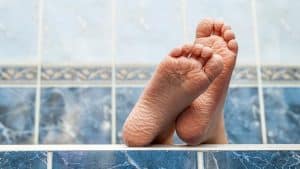 “But what about if you soak it in water?” you say (having been told to do this by many authority figures, but not necessarily how to get your horse to cooperate).
“But what about if you soak it in water?” you say (having been told to do this by many authority figures, but not necessarily how to get your horse to cooperate).
Hoof acts very much like your skin when you soak either one in the water. When left in a bathtub for a while – presumably with you in it – your skin gets all wrinkly from absorbing water into the outer layers. When it dries, all of the water evaporates. Scientific American did a great, quick article about what happens with water and your skin: it’s a pretty directly comparable to what goes on in hoof.
ANY BOTTOM LINES?
About the only thing that a hoof dressing can realistically do is affect the rate of moisture loss from the dead hoof tissue. And, in one study, done in the 1990’s, and presented to the American Association of Equine Practitioners, petroleum-based hoof dressings ointments slowed evaporation more than lanolin-based dressings. So, you can look for that, but how important it is, is really anyone’s guess. Under any circumstances, since hoof is dead, putting stuff like MSM, or vitamins, or hyaluronic acid into hoof ointments really doesn’t make a lot of sense. It might make someone some extra money, but it doesn’t make a lot of sense.
Even so, if you think that your horse’s feet have some sort of a problem that makes you want to run out and invest in a particular hoof dressing, you might want to consider looking elsewhere, for things such as a problem with diet, an inappropriate shoeing schedule, genetics (which you can’t fix), excessive toe length, or exercise frequency and intensity. Otherwise stated, if you think your horse has the kind of foot that has a problem that a hoof dressing can fix, it’s likely that something else is going on.
Lastly, if you think you’ve found a hoof dressing that solves all of your horse’s hoof problems, stick with it. I would never try to convince you otherwise. I haven’t found a cure-all yet. But it’s only been 37 years since I started practicing and I still haven’t gotten to most of the available products.

